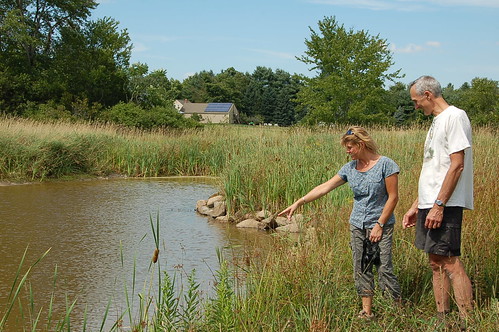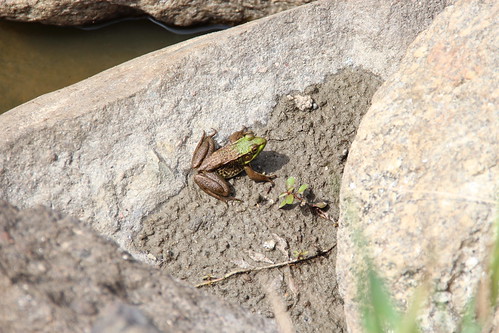
When Peter Talmage’s career as a professor of renewable energy and energy efficiency brought him from Maine to a college in Greenfield, Mass. with his wife and son, he knew that he wanted to enhance the beauty of the land that they bought in nearby Northfield and improve it as wildlife habitat.
So when his wife, Chris, heard about a USDA program that would guarantee its protection and provide help in restoring wetlands on the property, they were sold.
Through the USDA Natural Resources Conservation Service’s Wetlands Reserve Program, Peter and Chris protected 3 ½ of 12 acres under a permanent conservation easement. They received technical and financial help reshaping wetlands that had long ago been converted to farmland.
That project brought me to Talmages’ land, walking amid the waving grass and wildflowers surrounded by the sounds of chirping, buzzing, and croaking coming from thriving marshes. We were joined by District Conservationist Rita Thibodeau, of the NRCS field office in Greenfield, Mass., who helped Peter and Chris develop a conservation plan for their land and apply for the wetlands program.
“The blue heron was the first one in,” Peter Talmage told us, explaining how wildlife began appearing after the wetland was created. The heron was looking for minnows that now populate the pond.
The restored wetlands have already attracted a variety of waterfowl, turtles, moose, crayfish and countless beneficial bugs and insects. The sharp increase in wildlife is no accident. The wetlands were designed to have a variety of water depths to accommodate a diversity of wetland creatures.
The marsh edges slope gradually to provide habitat for wading birds and frogs. The deeper portions of the marshes will hold water when others nearby have long since dried out.
It’s part of a larger plan to provide habitat for wildlife. “We don’t mow until the end of July early August because of ground nesting birds. There are birds everywhere, all species,” said Peter, referring to the surrounding grasslands.
When I asked why he was willing to set aside his land for conservation, Peter explained, “We believe in conservation. We try to minimize our impact on the environment and enhance it for other species. It was our desire to renew and restore the environment.”
Over the winter, Peter and Chris invited the neighborhood kids over for ice skating on the frozen surfaces of the marshes. That’s how the work of one concerned citizen can benefit plants, insects, animals and humans alike.
Follow NRCS on Twitter.
Check out other conservation-related stories on the USDA blog.

